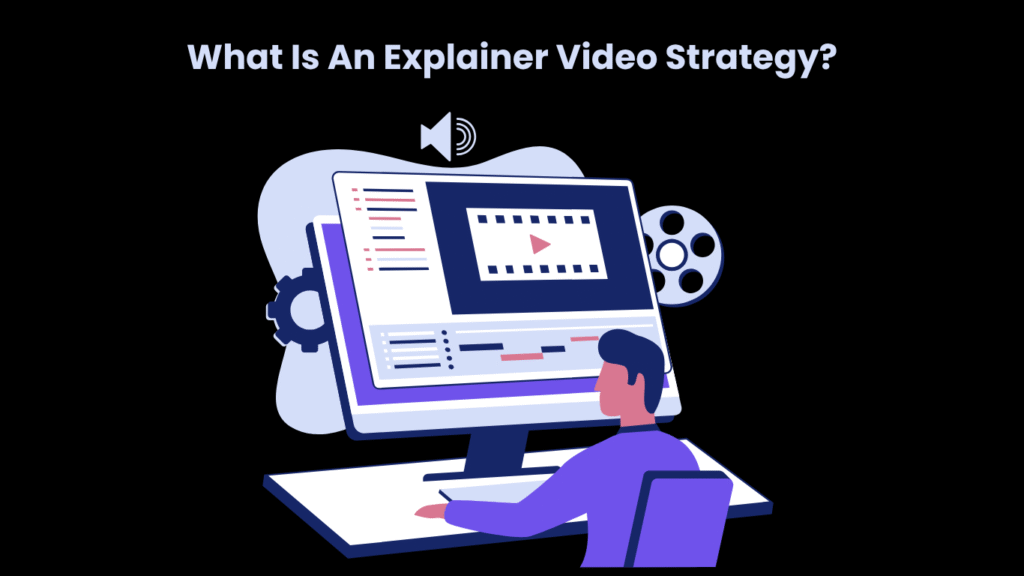An explainer video strategy is a structured approach to creating and deploying short, concise videos that explain a product, service, or concept. It combines storytelling, animation, or live-action visuals with messaging to educate, inform, or persuade a target audience.
More than just creating a video, the strategy encompasses setting clear goals, selecting the right format, aligning with the brand message, and planning distribution across various platforms.
The goal is to enhance communication effectiveness and increase viewer engagement by making complex ideas easy to understand.

Defining the Business Objective
The first step in an explainer video strategy is to define a clear business objective. This could range from increasing awareness of a new product, improving sign-ups on a platform, training employees, or boosting conversion rates. Production companies like Vidico help brands align messaging with outcomes. They enable you to tell your story with Vidico explainers, creating targeted videos that support specific objectives and drive measurable results.
In addition, a strong objective helps guide every decision, from scripting to visual design to distribution. It also ensures that the final video aligns with the broader goals of the marketing or internal communication plan. When sharing internally, sharing explainer videos through tools for internal communication helps deliver updates quickly and consistently across teams. a startup introducing a software tool can make explainer video using Invideo AI to walk users through key features, aiming to reduce onboarding time. In contrast, a nonprofit may use a video to illustrate a social issue, aiming to encourage donations or seek grants for nonprofits.
Identifying Target Viewers
Knowing the intended audience is essential for crafting an effective explainer video. This involves researching demographics, behavioral patterns, pain points, and decision-making processes. An explainer video that works for tech-savvy startup founders will likely differ from one intended for corporate HR managers.
Audience insights help determine the tone, language, and visual style of a message. A formal, data-driven approach may be suitable for enterprise customers, while a playful, animated explainer might work better for younger, digital-native audiences. Understanding what your audience cares about ensures that the video addresses their concerns directly and resonates on a personal level.
Clarifying the Core Message
Every explainer video should have one primary message. Trying to cover too much in a short video can confuse viewers and dilute the impact. Instead, the script should focus on solving a single problem or answering a key question.
The most effective videos follow a simple structure:
- Present the problem
- Introduce the solution
- Explain how it works
- Highlight the benefits
- End with a clear call to action
This structure ensures that viewers understand not just what the product or service is but why it matters and how to take the next step. A focused message increases retention and encourages action.
Choosing the Right Format

There are several types of explainer video formats, and selecting the appropriate one depends on the topic, audience, and platform. Common formats include:
- Animated explainer – Ideal for abstract or complex topics
- Live-action explainer – Great for building human connection
- Screencast/tutorial – Useful for showing software or processes
- Whiteboard animation – Effective for storytelling or step-by-step education
- You can also explore AI videos to automate video creation or personalize content at scale.
The chosen format should support the core message and be consistent with brand identity. For example, tech companies tend to lean toward sleek, animated visuals, while service-based businesses may benefit from live-action videos featuring staff or customers.
Writing Clear Scripts
Explainer videos rely on tight scripting; with a limited duration, each line must deliver value and advance the story. The script should:
- Use simple, jargon-free language
- Maintain a logical flow
- Focus on benefits over features
- Include a clear CTA at the end
It’s important to write for the ear, not the eye. Explainer videos are meant to be heard, so the script should sound natural when spoken aloud. Collaborating with voice-over talent during script development can help ensure the final narration feels smooth and engaging.
Designing for Engagement
Visual design plays a major role in keeping viewers engaged. The animation, color scheme, character design, and pacing should all reinforce the message and align with the brand. Key tips include:
- Use consistent branding elements (colors, fonts, logos)
- Maintain visual simplicity to avoid distraction
- Use motion to guide the viewer’s attention
- Add captions for silent viewing on mobile
Visual consistency not only improves recall but also creates a professional look that enhances credibility. Even small design decisions can influence how the video is perceived. So, if you plan to hire a video animation company to create your explainer video, make sure the visuals remain consistent throughout to maintain a professional and engaging look.
Optimizing Video Placement
Even the best video won’t deliver results if it’s not seen. A comprehensive explainer video strategy includes distribution planning, ensuring the video appears where it’s most likely to influence the viewer. Popular channels include:
- Company homepage
- Product or landing pages
- Email marketing campaigns
- Social media platforms
- Paid advertising campaigns
- Sales presentations or webinars
Videos should be optimized for each platform. For example, a YouTube version may include additional SEO-friendly metadata, whereas an Instagram version may be formatted vertically and kept under one minute. To build initial reach and gain traction, you can consider buying YouTube views, allowing organic engagement to take over naturally afterward.
Measuring Performance Metrics
Tracking video performance helps determine if the strategy is working and what to improve. Key performance indicators (KPIs) include:
- View count
- Watch time and retention rate
- Click-through rate (CTR)
- Conversion rate
- Bounce rate (on landing pages with videos)
By analyzing these metrics, businesses can assess whether the video is meeting its objectives. For instance, if viewers are dropping off early, the opening may need to be more compelling. If the video has high engagement but low conversions, the call-to-action might need refinement.
Read More: How to Edit Video Using Canva for Free: To Upload on Social Media
In Summary
An explainer video strategy is much more than producing a one-off video—it’s a deliberate, goal-oriented process that integrates video content into a broader marketing framework.
Every stage, from goal setting and audience analysis to message refinement and performance tracking, shapes the success of the video.
By developing a thoughtful, data-driven explainer video strategy, businesses can enhance communication, improve the user experience, and ultimately drive better outcomes throughout the customer journey.




